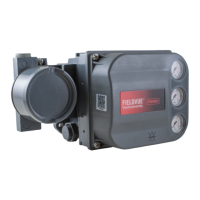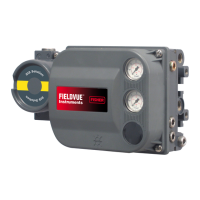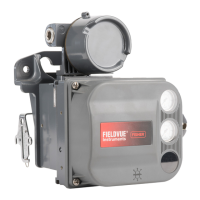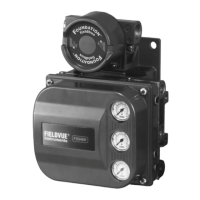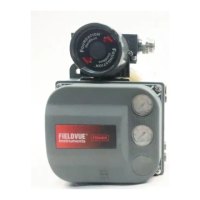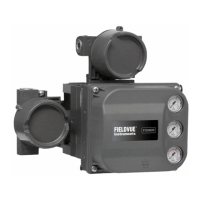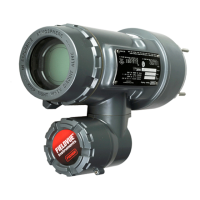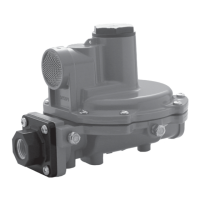Instruction Manual Supplement
D104299X012
DVC6200 SIS
October 2018
20
Incoming Ramp Rate is the rate at which the valve will move during the incoming stroke of the Partial Stroke test. The
default value is 0.25%/second. The incoming stroke is the return stroke to normal end. See figure 29.
Test Pause Time is the time between the outgoing and incoming strokes of the test. The default value is 5 seconds.
Pause Time will not be used if Short Duration PST is enabled and the travel reaches the minimum travel movement
and. See figure 29.
Short Duration PST, when enabled, the incoming stroke is initiated as soon as the travel reaches the minimum travel
movement. Refer to figure 29 for a time series representation of this parameter.
Maximum Allowed Travel Movement defines the percentage of the calibrated travel span that the valve moves away
from its normal operating end of travel towards its tripped end of travel during the test (see figure 29). When enabled
as an abort criteria the test will terminate and the valve will return to the normal end following the configuration for a
failed test behavior.
Minimum Travel Movement is the percentage of the calibrated travel span that the valve must move away from its
normal operating end of travel towards its tripped end of travel during the test, for the test to be successful. The
Incoming stroke will be initiated on reaching the minimum travel movement when short duration PST is enabled The
default value is 10%.
Return Lead, defines the percent (%) change in setpoint to overcome the hysteresis in the valve assembly.
Test Acceptance Criteria
D Outgoing Pressure Threshold defines the actuator pressure at which a partial stroke test will detect a pressure
threshold violation during the outgoing stroke (see figure 28). When enabled as an abort criteria it prevents the
DVC6200 SIS from exhausting (or building) excessive pressure from/to the actuator to move a stuck valve. During
PST Calibration, the Partial Stroke Outgoing Pressure Threshold will be set automatically.
D Incoming Pressure Threshold defines the actuator pressure at which a partial stroke test will detect a pressure
threshold violation during the incoming stroke (see figure 28). During PST Calibration, the Partial Stroke Incoming
Pressure Threshold will be set automatically.
D Breakout High, in percent (%) of calibrated travel, is the point above which the valve is considered to have reached
the high end. This value is automatically set during the PST calibration and can be refined by the user using the
Travel High High variable in the Travel Alerts tab.
D Breakout Low, in percent (%) of calibrated travel, is the point below which the valve is considered to have reached
the low end. This value is automatically set during the PST calibration and can be refined by the user using the Travel
Low Low variable in the Travel Alerts tab.
D High Friction Breakout Pressure indicates the force required to breakout of the normal end of travel is higher than
the user configured threshold. The breakout is defined as the pressure at which the travel crosses the user
configured breakout travel, either high or low depending on the configured normal end. PST Calibration sets this
value automatically for most actuators. The user can refine this pressure threshold based on PST data. Refer to
figure 28.
D Low Friction Breakout Pressure indicates the force required to breakout of the normal end of travel is lower than the
user configured threshold. The breakout is defined as the pressure at which the travel crosses the user configured
breakout travel, either high or low depending on the configured normal end. PST Calibration sets this value
automatically for most actuators. The user can refine this pressure threshold based on PST data. Refer to figure 28.
D Breakout Timeout is the time in seconds before which the travel must have moved beyond the breakout high or
breakout low travel thresholds, depending on the test start point.

